- Home
- Patrick Robinson
The Shark Mutiny (2001) Page 28
The Shark Mutiny (2001) Read online
Page 28
The Taiwan High Command in Taipei was forced to the opinion that China was in the process of capturing all 64 of the Penghu Islands, with their historic 147 temples, mostly dedicated to Matsu, the goddess of the sea, who would always protect the islanders but who was not having that much effect right now.
The Penghus have been for centuries permanent home mostly to fishermen and farmers. Walls of coral, built to protect large crops of peanuts, sweet potatoes and sorghum, form a unique landscape. The endless beaches and blue waters have made the Penghus one of the great tourist attractions in the East.
However, at this precise moment the beautiful Lintou Beach, on the seaward side of Makung, resembled Dunkirk, 1940, more than anywhere else. Batteries of China’s CSS-X7 missiles—a new version of the Russian-designed M-11 with a 500-kilogram warhead—were detonating everywhere. Oceanfront bars and restaurants were flattened, huge spouts of salt water and sand blasted over the city.
In Taipei, the President, in conference with the Premier and his military Chiefs of Staff, ordered an immediate defense of the islands, “before the Chinese attempt a landing.”
Lieutenant General Chi-Chiang Gan, Commander-in-Chief of the Army, ordered 25,000 troops from all military bases on the northeast coast to head south by road and rail. At 0200, the government commandeered every fast train on the electrified west coast line, particularly the Ziqiang and Zuguang expresses. The General ordered an airlift of 20,000 troops from the Taipei area to the big southern Navy base at Kaohsiung.
Admiral Feng-Shiang Hu, Commander-in-Chief of the Navy, ordered the 66th Marine Division based in Kaohsiung to embark and sail immediately to reinforce the island garrison at Makung. He put three Newport-Class troop landing ships and a 9,000-ton Cabildo-Class LSD on four hours battle notice. The Cheng Hai docks down three small Japanese-built LSUs, each capable of carrying 300 men right into the beaches.
In the small hours of the morning, the Taiwan High Command desperately signaled the U.S. Seventh Fleet HQ requesting immediate military assistance, informing the United States that Taiwan was under attack from the forces of mainland China. Admiral Feng-Shiang personally told Admiral Dick Greening, Commander-in-Chief Pacific Fleet (CINCPACFLT) in Pearl Harbor, that he feared for his country’s existence, that right now an air battle was raging over the Taiwan Strait, and that his pilots were winning it. But on the sea, China had a major flotilla of warships both bombarding and preparing to land on the strategically important Penghu Islands, which everyone knew China had always wanted to own.
“We badly need a carrier battle group, anything to get them away.” Admiral Feng-Shiang was almost pleading. But there was nothing CINCPACFLT could do. Nothing anyone could do. The United States did not have a CVBG available except in the Middle East, which was nearly two weeks away from the Taiwan Strait. And anyway, it could scarcely be spared.
Powerless in Pearl Harbor, the Admiral knew now why Big John had been hit in such a brutal and unexplained manner. “Holy shit,” breathed Admiral Greening. “The bastards are gonna take Taiwan. And as far as I can see there’s not a damn thing we can do about it—we don’t even have the hardware to attack China.”
He promised to get right back to the distraught Taiwanese Admiral, but right now he had to call Washington and inform Alan Dixon about precisely what was happening.
They patched him through to the White House, where the CNO was with Arnold Morgan. Kathy put the secure call on the conference line, and both Washington-based Admirals listened aghast as Admiral Greening informed them that China had militarily invaded Taiwan. At the conclusion of the call, Admiral Dixon requested 30 minutes to thoroughly appreciate the situation.
But Arnold Morgan stood up, and there was a strange smile on his face. He shook his head, over and over, and kept saying, “Those little bastards…those cunning little pricks.”
Finally he turned back to the CNO, and he said, “Alan, old buddy, did you ever hear the term ‘checkmate’?”
“Guess so.”
“Good. Because we’re in it.”
Every piece of information he had absorbed in the past several months, every twist and turn of the plot in the Gulf of Hormuz, sprang now, miraculously, into place. Right back to that moment when Lt. Ramshawe had called him in the restaurant. Arnold Morgan could remember the young Lieutenant’s words verbatim: “It is my opinion that there may be a serious minefield out there, maybe running from the Omani coast, place called Ra’s Qabr al Hindi, right across to Iran. And I think we ought to find out.”
The Admiral was talking aloud now. “Jimmy was right. And he ought to be promoted for brilliance. Borden is going to be relieved of command at Fort Meade. George Morris is gonna get better in the next twenty minutes or he’s fired too, so are all his fucking doctors. And I’m about to admit I’ve been outwitted by the goddamned Chinese pricks. They never wanted to screw up the oil, never gave a flying fuck about the oil, they just wanted to tie us up, at least tie up the carriers, thousands of miles from the South China Sea.
“I guess we threw ’em a curve when we diverted the JFK back to Taiwan. So by some damn clever means they crippled her. And then there were none…. Hours later they attack Taiwan, knowing beyond any doubt there is nothing on earth we can do about it, save for starting World War Three with nuclear missiles. And even Taiwan ain’t worth that.”
“Holy shit,” breathed Alan Dixon. “You mean there’s nothing we could do to save her?”
“There’s plenty we could do. But not in time. Taiwan will fall inside two weeks. That’s how long it would take the Truman Group or the Roosevelt Group to get there. The fight would be all over before they could get out of the Indian Ocean.”
“But so far they’ve only taken a few shots at the Penghu Islands.”
“Alan, that news is gonna be so out of date by tomorrow morning it’ll make the Washington Monument look like Stonehenge.”
Admiral Morgan checked his watch. It was already 1700 hours—0600 hours the following morning over the Penghu Islands, where, suddenly, the rumble of battle grew steadily more faint, and the surviving Chinese bombers swung back toward the mainland. The flotilla of warships ceased their bombardment but closed rapidly, effecting a complete blockade of the islands. Anyone wanting to get in would have to fight the Chinese Navy.
With half the armed forces of Taiwan already well on their way south, Admiral Zhang, who had assumed command of the entire operation, moved to Phase Two. And as the sun rose bloodred out of the Pacific Ocean, he unleashed the massive missile bombardment of the west coast of Taiwan he had been planning for six months.
It started in the north with Chiang Kai-shek International Airport, the powerful SRBMs blasting craters in the runways, but surprisingly taking out only the air-traffic control tower. The regular passenger terminals were not targeted.
Zhang’s ballistic missiles slammed into the road system, blasting huge chunks out of the coastal highway. They hit the town of Chungli, where the main south-running freeway crosses Route 1. They obliterated that junction and took out 400 yards of the railroad track.
They blew apart a freeway road bridge west of Hainchu. They hit the Mingte Dam, west of Miaoli, and three times more they knocked serious hunks out of the south-running roads, freeways and railroads before they reached the majestic bridges that span the estuary of the Choshui River.
And there, with a withering salvo of missiles, the Chinese took out all four of them, blasting steel and masonry into the water, stopping Route 17 in its tracks, ending the long winding path of Route 19, splitting asunder the great north-south freeway, and closing down the south-running railroad.
The entire transportation system that crosses the pancake-flat, rice-growing plains of west-central Taiwan was in ruins. And that was before the Chinese missiles reached the southwestern city of Tainan, Taiwan’s provincial capital for more than 200 years until 1885.
Zhang’s missiles completely destroyed every runway on the airport. They hammered Routes 17 and 19 north of the river and
blasted yet again the main highway south. There were three massive separate hits on the most important road-freight artery in the country as it swept west of the city toward the port of Kaohsiung, 30 miles farther south.
At that point it was just about impossible to move troops or anything else back to the north. Admiral Zhang’s brilliant feint to the Penghu Islands had drawn half the Taiwanese army 235 miles away from his main objective, Taipei.
And the Chinese warlord had not even begun. Again he launched his remaining 120 B-6/BADGER aircraft, and they headed out over the coast in three great waves of 40, again loaded with the new land-attack cruise missiles. This time their targets were strictly military, Taiwan’s air-defense installations, Air Force runways and Naval bases, places the PLAN had been watching and checking for years.
The BADGERs were accompanied by Air Force fighters, the Q-5B Fantan and more bombers, the newer JH-7s and the SU-30MKKs. Air-superiority aircraft, J-10 and J-11 Flankers, flew sortie after sortie, trying to protect the bomber force and downing several Taiwanese fighter aircraft in a sustained attempt to gain air superiority over the strait.
The opening attacks hit the brand-new, but untried, Modified Air Defense System (MADS), with its super-PATRIOT antiballistic missiles, which had been installed all around the capital. They slammed the airfields of the new Indigenous Defense Fighter aircraft in Taoyuan County and farther south in Yunlin. All along the flat west coastal plain they took out the Tien Kung air-defense systems. They hit the high slopes of the central mountains where the Taiwanese military had major west-facing air-command and-control centers, built especially to deal with a massive incoming attack from the mainland, as this most certainly was.
For years Chinese agents had reported to Beijing every detail of the key Taiwanese logistic centers and the military Intelligence headquarters (C-41). And now the land-attack missiles, launched from the air, were aimed at every one of them, backed up by the huge short-range ballistic missiles that were still thundering into the sky every few minutes from their launchers 100 miles across the strait in Fujian and Jangxi Provinces.
Brave little Taiwan shuddered under the withering onslaught of the Dragon from across the water. But they conceded nothing. Hour after hour, their pilots had fought those F-16s into the sky, attacking the incoming missile bombers. And by midday it was apparent that China had made an error of judgment in not locating Taiwan’s mobile short-range air-defense systems, CHAPARRAL, STINGER/AVENGER and ANTELOPE.
CHAPARRAL consists of four modified AIM-9C Sidewinders mounted on tracked vehicles; the STINGER/AVENGER SAMS is a pedestal-mounted system with two pods, each one containing four STINGER missiles, mounted on the back of a High Mobility Multi-Purpose Wheeled Vehicle (HMMWV). ANTELOPE, developed and perfected at Taiwan’s Chung Sang Institute of Science and Technology, fires from an HMMWV four Tien Chien-1 missiles with a 14-mile range. A deadly low-flying intercepter, it has an outstanding target acquisition system.
The Taiwanese moved these three systems along their west coastline to lethal effect, launching their missiles doggedly and accurately, from anywhere they found cover. They fired from the rice fields, from behind barns, woods and coral walls. They fired from any of the foothills of the coastal mountains they could reach. And by midafternoon they had devastated the Chinese fleet of BADGER bombers. Of the 120 that came in from the mainland, fewer than 70 made it back.
But they had only stopped the aircraft, not the missiles, and by nightfall Taiwan’s entire transportation system in the west was wrecked. The communications systems, both civilian and military, were nonoperational. And their permanent air-defense systems were essentially destroyed. There was nothing left of the much-vaunted SKYGUARD installations. The AIM-7M/SPARROW antiaircraft missiles had scarcely left the ground.
In the entire history of aerial combat, the monstrous struggle for supremacy above the Taiwan Strait was right up there with the battle of Britain, except that both Admiral Zhang and Taiwan’s Air Force C-in-C, General KeChiang Wong, had it all over H. Goering and Adolf.
By nightfall on May 23, China had achieved the destruction of many of its objectives, but somehow Taiwan had fought them off. In addition to the battering of the BADGER fleet, China had lost 10 Fantans, plus 12 more bombers and nine Flankers.
The Taiwanese had lost a total of 43 combat aircraft, which meant, in a sense, they were somehow winning the air battle. But China had 2,200 fully operational fighter and bomber aircraft, while Taiwan had a total of only 400 combat aircraft. As in every war in its long history, China was perfectly prepared to suffer massive attrition in pursuit of her goals, safe in the knowledge that ultimately she had more of everything, especially people, and these days, aircraft and ships.
The fact was, at this rate of killing, China could go on losing this air battle twice as long as Taiwan could go on winning it. The absence of the always-expected heavy U.S. air support was a death blow to the island, which suddenly found itself fighting for its life.
And the situation at sea was, if anything, worse. The Chinese Navy comprised 275,000 personnel, with more than 50 destroyers and frigates, 60 diesel-electric and six nuclear submarines, nearly 50 landing ships, plus several hundred auxiliaries and smaller patrol vessels.
Taiwan had an excellent Navy of 22 destroyers, 22 frigates, 50 fast-attack craft, but only 10 submarines. Their 40 landing ships were plainly not required in a conflict with China.
Unsurprisingly first blood on the water went to China. In the middle of the afternoon a PLA Naval Aviation long-range maritime patrol aircraft, a Y-8X Cub, flying down the center of the strait, picked up the small flotilla carrying the first wave of Taiwanese Marines going in to reinforce the Penghus.
The Cub signaled back to Southern Fleet HQ, and two hours later, two Chinese Kilos moved in and made a fierce underwater attack upon Taiwan’s warships. They slammed a torpedo into each of the Newport-Class LSTs and hit the Cheng Hai with two more, leaving the big LSD on fire and listing with more than 400 casualties on board.
And with every hour, more and more Chinese warships arrived on station around the Taiwan coast, securing their sea-lanes, plainly preparing to protect the Chinese landing force, which everyone now knew was inevitable.
0730 (local). Wednesday, May 23.
The White House. Washington, D.C.
The atmosphere in the Oval Office was subdued. Indeed an air of melancholy hung over the entire capital, as America’s friends, colleagues and partners on the other side of the world fought for survival.
The President was worried, mainly that he might somehow be blamed, and he was beginning to see himself as some kind of Nero figure, fiddling around in Washington while Taiwan burned.
“There must be something we can do,” he kept saying. And Bob MacPherson, the Defense Secretary, kept telling him that as far as he could see there was nothing. The Secretary of State, Harcourt Travis, thought the less said to anyone, the better, although he knew the USA was bound to defend Taiwan under the Taiwan Relations Act, Public Law 96-8.
Arnold Morgan paced the room, wracking his brains for a solution, concentrated now on trying to spell out the situation for the President. And he knew it would be difficult, because this President these days saw the world only in terms of himself, and his reputation at the end of his second term.
Finally, he was prepared, and he said, “Sir, as I have already explained, the Chinese have pulled off a stupendous act of deception, forcing us to put eighty percent of our available sea power into a false, but dangerous, situation in the Strait of Hormuz. In the process they have sunk three VLCCs and caused the death of several seamen, most of them American, inside the Gulf of Iran. They have further hit and sunk a Japanese tanker north of the Malacca Strait and plainly torpedoed a U.S. aircraft carrier in the Pacific. They are now moving ahead and conquering Taiwan, the only objective they have ever been interested in.”
He paused to allow this catalog of Chinese transgressions to be fully appreciated. And then he continued, “In retu
rn, we have smashed their oil production in the gulf area. And I have warned their ambassador that we see no purpose in Chinese warships entering the area of the northern Arabian Sea in the future. Should they ignore this warning, they understand we will not hesitate to hit and sink any and all Chinese ships anywhere near the oil sea-lanes of the Middle East. They have done quite sufficient damage to the world oil market already, and the international community simply will not put up with their presence in the area any longer. The Chinese understand that. I think.”
“Arnold, I kinda know all that,” said the President. “I want you to deal with Taiwan.”
“Very well, sir. But you’ll forgive my reminding you that all these matters are very closely connected.”
“I’ll forgive you. Taiwan.”
“Okay,” said Admiral Morgan, declining to mention what he actually thought about the conversation—Some cheek, this fucking ignoramus trying to keep ME on track.

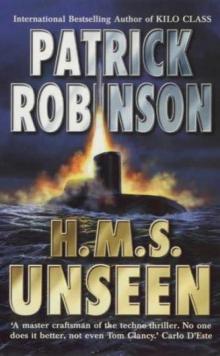 H.M.S. Unseen am-3
H.M.S. Unseen am-3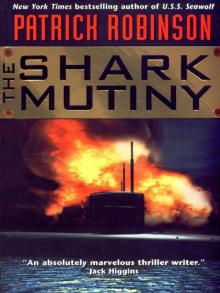 The Shark Mutiny (2001)
The Shark Mutiny (2001)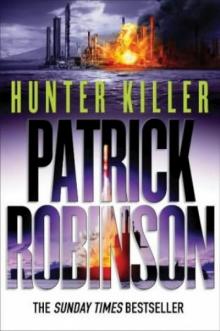 Hunter Killer am-8
Hunter Killer am-8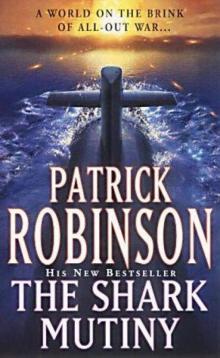 The Shark Mutiny am-5
The Shark Mutiny am-5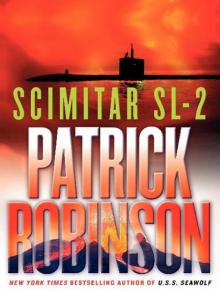 Scimitar SL-2
Scimitar SL-2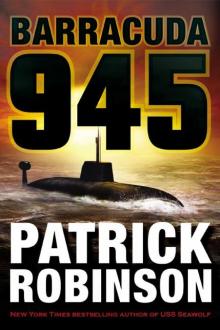 Barracuda 945 am-6
Barracuda 945 am-6 Hunter Killer
Hunter Killer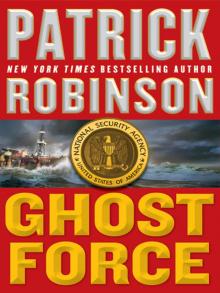 Ghost Force
Ghost Force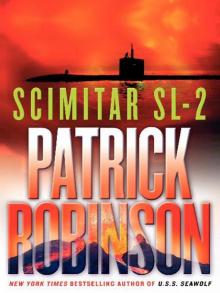 Scimitar SL-2 (2004)
Scimitar SL-2 (2004) Kilo Class am-2
Kilo Class am-2 The Lion of Sabray
The Lion of Sabray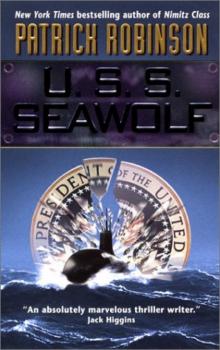 U.S.S. Seawolf am-4
U.S.S. Seawolf am-4 Ghost Force am-9
Ghost Force am-9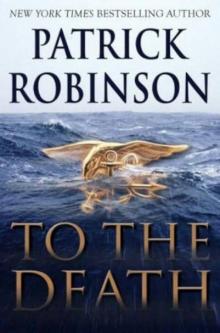 To the Death am-10
To the Death am-10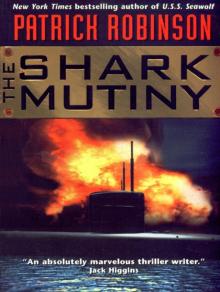 The Shark Mutiny
The Shark Mutiny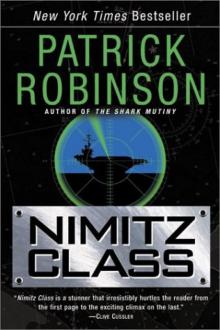 Nimitz Class am-1
Nimitz Class am-1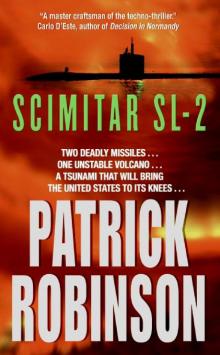 Scimitar SL-2 am-7
Scimitar SL-2 am-7 Barracuda 945
Barracuda 945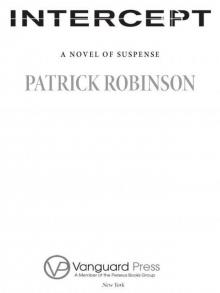 Intercept
Intercept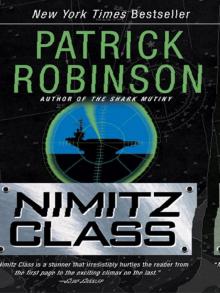 Nimitz Class (1997)
Nimitz Class (1997)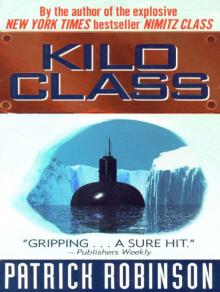 Kilo Class
Kilo Class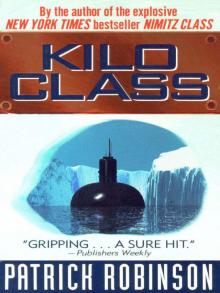 Kilo Class (1998)
Kilo Class (1998) Diamondhead
Diamondhead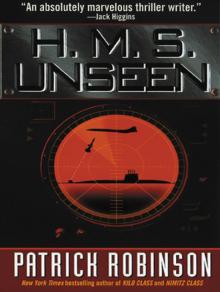 H.M.S. Unseen
H.M.S. Unseen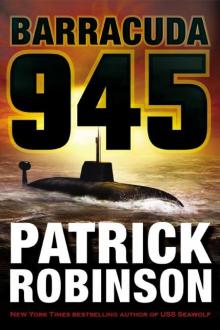 Barracuda 945 (2003)
Barracuda 945 (2003)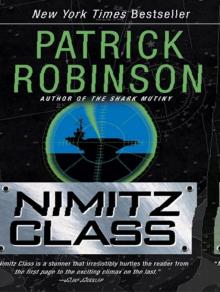 Nimitz Class
Nimitz Class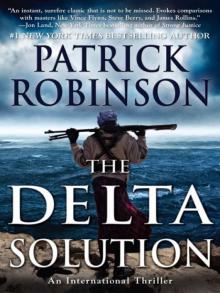 The Delta Solution
The Delta Solution U.S.S. Seawolf
U.S.S. Seawolf